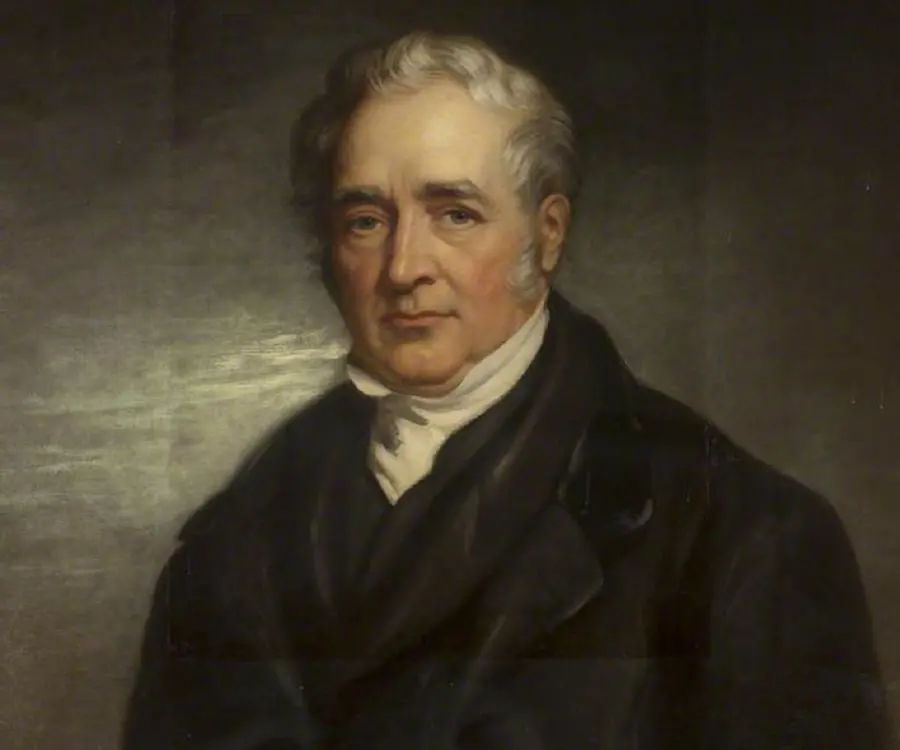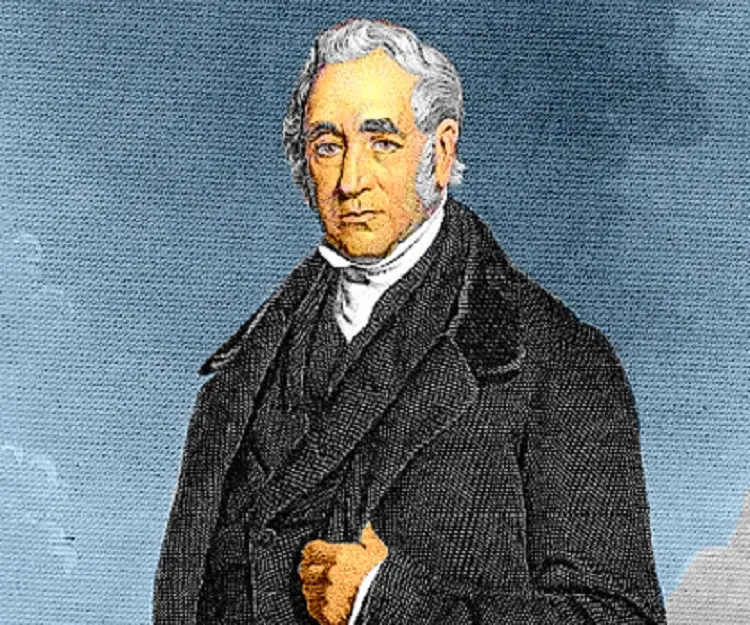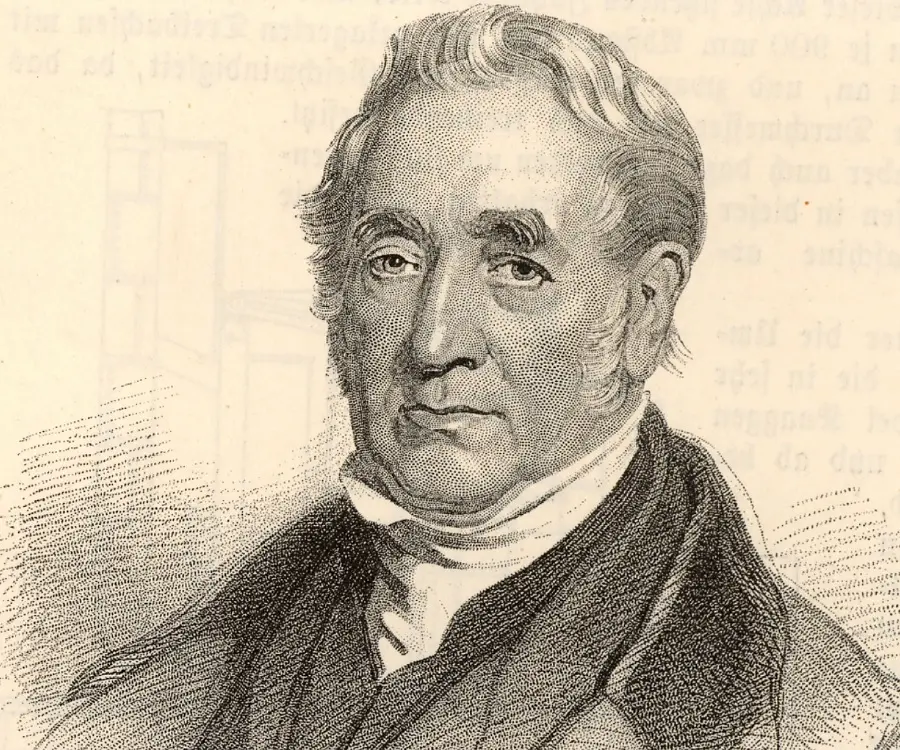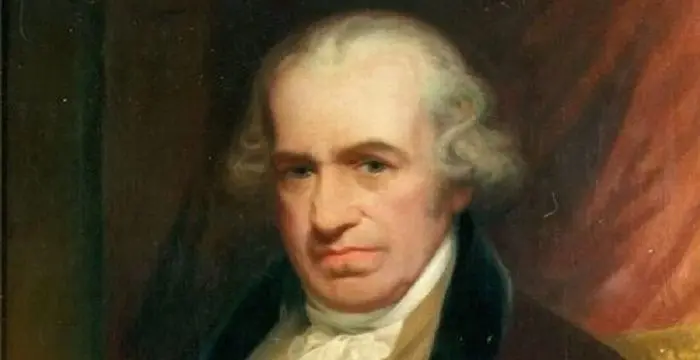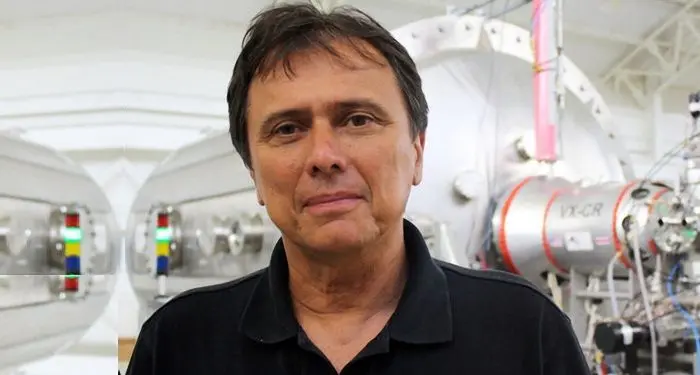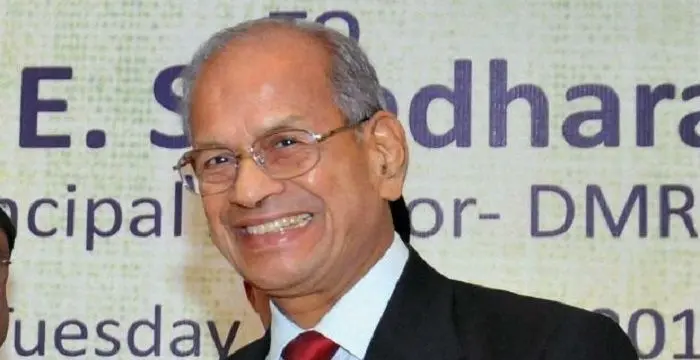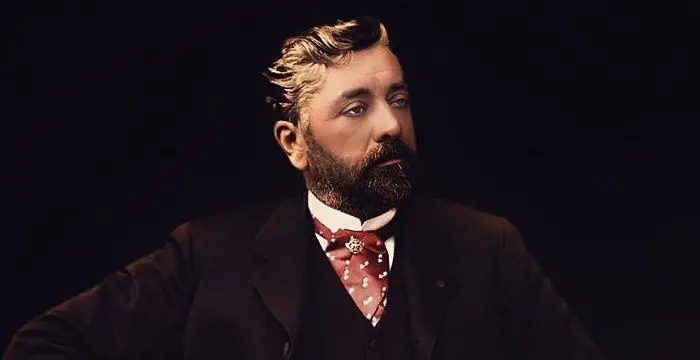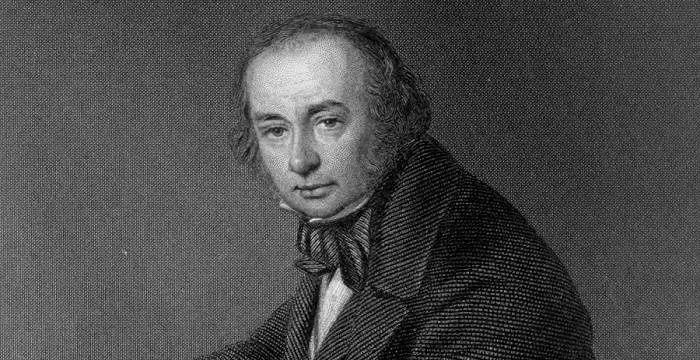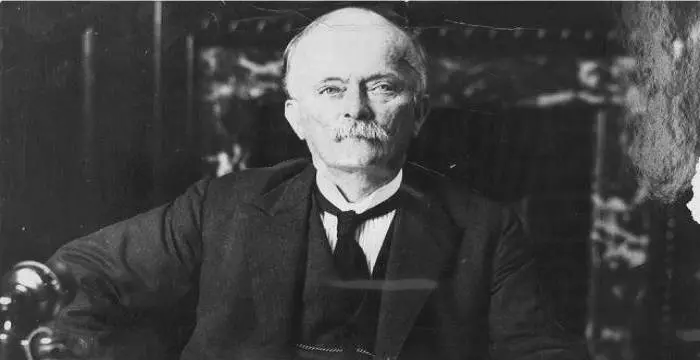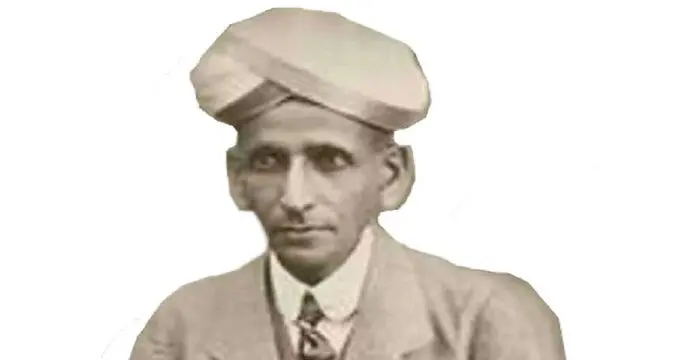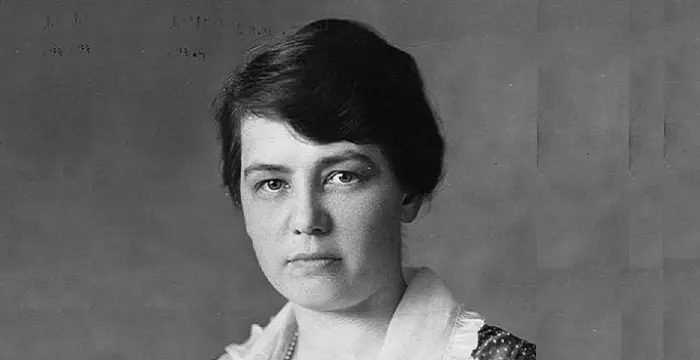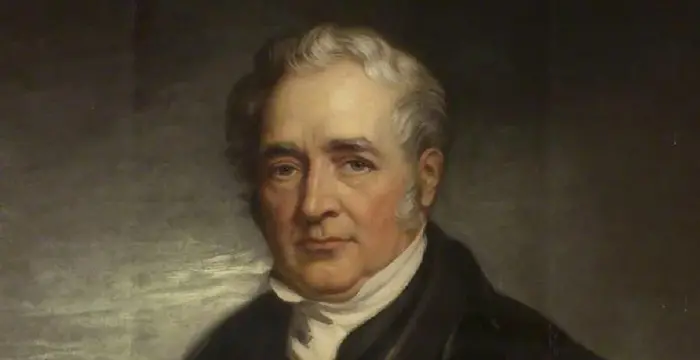
George Stephenson - Father of Railways, Timeline and Family
George Stephenson's Personal Details
George Stephenson was a British inventor who invented the first commercial locomotive and railways
| Information | Detail |
|---|---|
| Birthday | June 9, 1781 |
| Died on | August 12, 1848 |
| Nationality | British |
| Famous | Mechanical Engineers, Civil Engineers, Inventors & Discoverers, Father of Railways |
| Siblings | Robert Stephenson |
| Childrens | Robert Stephenson |
| Founder / Co-Founder |
|
| Discoveries / Inventions |
|
| Birth Place | Wylam |
| Gender | Male |
| Sun Sign | Gemini |
| Born in | Wylam |
| Famous as | Father of Railways |
| Died at Age | 67 |
George Stephenson's photo
Who is George Stephenson?
Popularly referred to as the Father of Railways, George Stephenson was a British inventor whose pioneering work in the field of civil and mechanical engineering led to the establishment of the world’s first public inter-city railway line that used steam locomotives. His is a perfect rags to riches story – from being born in a financially weak household to becoming a self-made engineer who not just re-shaped the transportation industry but brought about a major industrial revolution as well. It was due to him that animal power gave way to steam locomotive that eventually led to world’s first public railway line. Apart from building the first railway line, Stephenson is credited with inventing the most famous early railway locomotive, Rocket. Furthermore, it was Stephenson who devised the four feet eight-and-a-half inches railway gauge that has become a standard gauge by convention for most of the world’s railways till date. He is also responsible for developing a miners’ safety lamp that dramatically reduced the risk of explosion in the mining industry. Overall, Stephenson’s contribution has been immense as the inventor of railroad locomotive
// Famous Inventors & Discoverers
Nikola Tesla
Nikola Tesla was a Serbian-American inventor, best known for his development of alternating current electrical systems. This biography of Nikola Tesla provides detailed information about his childhood, life, achievements, works & timeline.
Thomas Newcomen
Thomas Newcomen was a British inventor who developed the world’s first steam engine. Browse through this biography to learn in details about his life, career, works and timeline.
Erno Rubik
The famous inventor and educationist, Erno Rubik is known world-wide for his invention the ‘Rubik’s Cube’. To know more about the childhood, profile, timeline and career of this famous architect-inventor read on.
Childhood & Early Life
George Stephenson was born on June 9, 1781 in Wylam, Northumberland to Robert and Mabel Stephenson. His father was a fireman with meagre means.
Born in a financially weak household, education was a luxury which Stephenson could not afford. He took to working as a Newcomen engineman when he was 17. The money gained from the job was spent studying in a night school where he learned how to read and write. He even learned mathematics.
Career
In 1801, Stephenson started working as a brakesman at Black Callerton Colliery. Following year, he married and moved to Willington Quay continuing his work as a brakesman. For extra income, he learned to repair shoes, fix clocks and cut clothes.
After the birth of his son, he shifted to work at the Killingworth Pit. In 1811, he was promoted as an enginewright for the Killington Colleries after he successfully fixed a pumping engine at High Pit. Soon, he became an expert of steam-driven machinery.
Taking cue from John Blenkinsop’s travelling engine, Stephenson devised his first locomotive in 1814. The engine was designed for hauling coal on Killingworth wagonway and was named Blucher. The first steam engine powered locomotive to run on railroad, it could haul 30 tons of coal up a hill at 4mph. It became the most successful working steam engine that had ever been constructed.
Having spent a better part of his life at coal mines, Stephenson was not naïve to the explosive danger faced by the mining industry. The workers used naked flames in pits full of inflammable gases. As such, to minimise the risk of explosion, he invented a safety lamp in 1815. The lamp used a cylinder with tiny air holes that restricted the exposure.
Following the success of his first locomotive engine, Stephenson devised 16 more locomotives for Killingworth. In 1817, he built a six-wheeled locomotive for Kilmarnock and Troon Railway.
In 1820, he was entrusted with the task of creating 8-mile railway in Hetton Colliery Railway. It was the first railway to be solely machine-powered and did not use any kind of animal power. The success of the railway led him to patent his cast iron rails.
Following the success of Hetton Colliery railway, he was appointed as an engineer for the construction of the Stockton and Darlington Railway in 1821. The line was 25 miles long and connected collieries at Stockton and Darlington. His son Robert assisted him in the project.
On September 27, 1825, the Stockton and Darlington railway started operating. The first locomotive for the railway named Locomotion hauled more than 80 tons of coal and flour for nine miles in two hours at a speed of 24 miles per hour on one stretch.
Stephenson built the first passenger car for the Stockton and Darlington railway route. Powered by the locomotive Experiment, it carried luminaries in its opening journey. With that, it became the world’s first public railways to run on steam locomotive.
During the building of Stockton and Darlington Railway, Stephenson created the historic measurement of the rail gauge at four feet eight-and-a-half inches which became the standard measurement of the railway gauge not just in Britain but all over the world. Till date, railways across the continents use Stephenson’s four feet eight-and-a-half inches gauge measurement.
The success of Stockton and Darlington railway multiplied Stephenson’s fame by manifolds. He was chosen as the chief engineer for the Liverpool and Manchester Railways.
A year before Liverpool and Manchester Railways were to become operational, a contest for the best and most powerful locomotive was held in 1829. Amidst the ten entries, Rocket, an engine devised by Stephenson and his son emerged as the clear winner. Rocket sped past at 36mph, breaking all previous records.
The Liverpool and Manchester Railways was inaugurated on September 15, 1830 amidst distinguished luminaries including Prime Minister of Waterloo and Duke of Wellington. Eight locomotives, all of which were built at Stephenson’s Newcastle works, were used on the Liverpool-Manchester line.
The success of laying railroad transportation and the feat of creating a superfast locomotive Rocket gave Stephenson a celebrity status. Such was the effect that railroad building spread rapidly throughout Britain, Europe, and North America, with Stephenson as the chief engineer for most projects. He also acted as a consultant on several railroad projects at home and abroad.
While the successful railroad transportation made Stephenson rich and famous, excavations undertaken to build railway lines led him to discover valuable coal reserves that make him wealthier and more affluent. This became prominent while Leicester and Swannington railway was in progress. Stephenson’s coal mine delivered the first rail cars of coal into Leicester, thus reducing the coal rates dramatically.
The decade between 1838 and 1848 was the busiest period for Stephenson as he was flooded with requests from railway builders across the world. Furthermore, his locomotive building business thrived exceptionally well as builders purchased locomotives from Stephenson’s Newcastle Works. He also superintended many of the railway projects including York and North Midland line, Manchester and Leeds line, Birmingham and Derby line, Sheffield and Rotherham line and so on.
Major Works
Stephenson major contribution has been as the inventor of the first commercial locomotive and railways. In 1814, he combined tramways and steam engine to make the first commercially viable locomotive, Blucher. Blucher was essentially created to haul coal. Though Blucher was extremely slow at 4mph, it marked the end of horsepower.
In 1822, he created the first machine-powered locomotive railway for the Hetton Colliery. However, his biggest breakthrough came with Stockton and Darlington railway line in 1825. It was the first public steam locomotive railway in the world. The success led way to several more railway lines including Liverpool and Manchester Railway and so on.
Stephenson is also credited for coming up with the historic measurement of the rail gauge at four feet eight-and-a-half inches which has become the standard measurement of the railway gauge all over the globe.
In 1829, Stephenson, along with his son Robert, created the most powerful locomotive engine of that time, Rocket. Rocket sped past at 36mph, breaking all previous records.
Personal Life & Legacy
Stephenson was involved in a number of romantic relationships before marrying Frances (Fanny) on November 28, 1802 at Newburn Church. The couple was blessed with two children, Robert and Fanny. Fanny died in infancy.
Following the death of his wife Frances due to tuberculosis, Stephenson remarried Betty Hindmarsh at Newburn on March 29, 1820. They did not have any children. Betty passed away in 1845.
Stephenson married for a third time to Ellen Gregory, his housekeeper, on January 11, 1848 at St John's Church in Shrewsbury, Shropshire.
He died on August 12, 1848, due to pleurisy. He was buried at Holy Trinity Church, Chesterfield.
For his outstanding contribution in civil and mechanical engineering, he has been commemorated variedly. His birthplace home in Wylam has been converted into a historic house museum.
Several colleges, schools, institutions and pubic societies have been named after him. He also has a railway museum in North Shields by the name Stephenson Railway Museum.
From 1990 until 2003, his portrait appeared on the reverse of E £5 notes series issued by the Bank of England.
In 2002, he was named in the BBC’s list of 100 Greatest Britons.
Trivia
Credited with building the world’s first public inter-city railway, this civil and mechanical engineer is popularly known as the Father of Railways.
// Famous Mechanical Engineers
Nikola Tesla
Nikola Tesla was a Serbian-American inventor, best known for his development of alternating current electrical systems. This biography of Nikola Tesla provides detailed information about his childhood, life, achievements, works & timeline.
Kitaw Ejigu
Kitaw Ejigu was an Ethiopian American engineer and political leader. This biography of Kitaw Ejigu provides detailed information about his childhood, life, achievements, works & timeline.
Franklin Chang Díaz
Franklin Chang-Diaz is an American-Costa Rican physicist and former NASA astronaut. This biography profiles his childhood, life, career, achievements and timeline.
George Stephenson biography timelines
- // 9th Jun 1781George Stephenson was born on June 9, 1781 in Wylam, Northumberland to Robert and Mabel Stephenson. His father was a fireman with meagre means.
- // 1801In 1801, Stephenson started working as a brakesman at Black Callerton Colliery. Following year, he married and moved to Willington Quay continuing his work as a brakesman. For extra income, he learned to repair shoes, fix clocks and cut clothes.
- // 28th Nov 1802Stephenson was involved in a number of romantic relationships before marrying Frances (Fanny) on November 28, 1802 at Newburn Church. The couple was blessed with two children, Robert and Fanny. Fanny died in infancy.
- // 1811After the birth of his son, he shifted to work at the Killingworth Pit. In 1811, he was promoted as an enginewright for the Killington Colleries after he successfully fixed a pumping engine at High Pit. Soon, he became an expert of steam-driven machinery.
- // 1814Taking cue from John Blenkinsop’s travelling engine, Stephenson devised his first locomotive in 1814. The engine was designed for hauling coal on Killingworth wagonway and was named Blucher. The first steam engine powered locomotive to run on railroad, it could haul 30 tons of coal up a hill at 4mph. It became the most successful working steam engine that had ever been constructed.
- // 1814Stephenson major contribution has been as the inventor of the first commercial locomotive and railways. In 1814, he combined tramways and steam engine to make the first commercially viable locomotive, Blucher. Blucher was essentially created to haul coal. Though Blucher was extremely slow at 4mph, it marked the end of horsepower.
- // 1815Having spent a better part of his life at coal mines, Stephenson was not naïve to the explosive danger faced by the mining industry. The workers used naked flames in pits full of inflammable gases. As such, to minimise the risk of explosion, he invented a safety lamp in 1815. The lamp used a cylinder with tiny air holes that restricted the exposure.
- // 1817Following the success of his first locomotive engine, Stephenson devised 16 more locomotives for Killingworth. In 1817, he built a six-wheeled locomotive for Kilmarnock and Troon Railway.
- // 1820In 1820, he was entrusted with the task of creating 8-mile railway in Hetton Colliery Railway. It was the first railway to be solely machine-powered and did not use any kind of animal power. The success of the railway led him to patent his cast iron rails.
- // 29th Mar 1820 To 1845Following the death of his wife Frances due to tuberculosis, Stephenson remarried Betty Hindmarsh at Newburn on March 29, 1820. They did not have any children. Betty passed away in 1845.
- // 1821Following the success of Hetton Colliery railway, he was appointed as an engineer for the construction of the Stockton and Darlington Railway in 1821. The line was 25 miles long and connected collieries at Stockton and Darlington. His son Robert assisted him in the project.
- // 1822 To 1825In 1822, he created the first machine-powered locomotive railway for the Hetton Colliery. However, his biggest breakthrough came with Stockton and Darlington railway line in 1825. It was the first public steam locomotive railway in the world. The success led way to several more railway lines including Liverpool and Manchester Railway and so on.
- // 27th Sep 1825On September 27, 1825, the Stockton and Darlington railway started operating. The first locomotive for the railway named Locomotion hauled more than 80 tons of coal and flour for nine miles in two hours at a speed of 24 miles per hour on one stretch.
- // 1829A year before Liverpool and Manchester Railways were to become operational, a contest for the best and most powerful locomotive was held in 1829. Amidst the ten entries, Rocket, an engine devised by Stephenson and his son emerged as the clear winner. Rocket sped past at 36mph, breaking all previous records.
- // 1829In 1829, Stephenson, along with his son Robert, created the most powerful locomotive engine of that time, Rocket. Rocket sped past at 36mph, breaking all previous records.
- // 15th Sep 1830The Liverpool and Manchester Railways was inaugurated on September 15, 1830 amidst distinguished luminaries including Prime Minister of Waterloo and Duke of Wellington. Eight locomotives, all of which were built at Stephenson’s Newcastle works, were used on the Liverpool-Manchester line.
- // 1838 To 1848The decade between 1838 and 1848 was the busiest period for Stephenson as he was flooded with requests from railway builders across the world. Furthermore, his locomotive building business thrived exceptionally well as builders purchased locomotives from Stephenson’s Newcastle Works. He also superintended many of the railway projects including York and North Midland line, Manchester and Leeds line, Birmingham and Derby line, Sheffield and Rotherham line and so on.
- // 11th Jan 1848Stephenson married for a third time to Ellen Gregory, his housekeeper, on January 11, 1848 at St John's Church in Shrewsbury, Shropshire.
- // 12th Aug 1848He died on August 12, 1848, due to pleurisy. He was buried at Holy Trinity Church, Chesterfield.
// Famous Civil Engineers
E. Sreedharan
E. Sreedharan is an Indian engineer known as the “Metro Man” for his pivotal role in building the Konkan Railway and Delhi metro. This biography of E. Sreedharan provides detailed information about his childhood, life, achievements, works & timeline.
Gustave Eiffel
Alexandre Gustave Eiffel was a French civil engineer and architect who built the famous Eiffel Tower. This biography profiles his childhood, life, career, achievements and timeline.
Isambard Kingdom Brunel
Isambard Kingdom Brunel was the English civil engineer who built the Great Western Railway. This biography of Isambard Kingdom Brunel provides detailed information about his childhood, life, achievements, works & timeline.
John Bradfield
John Bradfield was an Australian engineer, who oversaw the design and building of ‘Sydney Harbour Bridge’. This biography of John Bradfield provides detailed information about his childhood, life, achievements, works & timeline.
M. Visvesvaraya
M. Visvesvaraya was a famous Indian engineer whose birthday, 15th September, is celebrated as ‘Engineer’s Day’ in India. This biography of M. Visvesvaraya provides detailed information about his childhood, life, achievements, works & timeline.
Elmina Wilson
Elmina Wilson was the first woman to receive a four-year civil engineering degree (BSCE) from Iowa State University (ISU). This biography of Elmina Wilson provides detailed information about her childhood, life, achievements, works & timeline.
George Stephenson's FAQ
What is George Stephenson birthday?
George Stephenson was born at 1781-06-09
When was George Stephenson died?
George Stephenson was died at 1848-08-12
Where was George Stephenson died?
George Stephenson was died in Tapton House
Which age was George Stephenson died?
George Stephenson was died at age 67
Where is George Stephenson's birth place?
George Stephenson was born in Wylam
What is George Stephenson nationalities?
George Stephenson's nationalities is British
Who is George Stephenson siblings?
George Stephenson's siblings is Robert Stephenson
Who is George Stephenson childrens?
George Stephenson's childrens is Robert Stephenson
Which company or organization was founded by George Stephenson?
George Stephenson was the founder/co-founder of Liverpool and Manchester Railway, Institution of Mechanical Engineers, Robert Stephenson and Company
What is George Stephenson's inventions/discoveries?
Steam Locomotive, Killingworth Locomotives, Stephenson's Rocket, My Lord was invented (or discovered) by George Stephenson
What is George Stephenson's sun sign?
George Stephenson is Gemini
How famous is George Stephenson?
George Stephenson is famouse as Father of Railways
